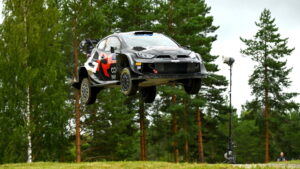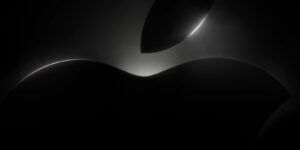Painting on the edge: Depth of field

Optical lenses are surprisingly old, first appearing in spectacles in the late thirteenth century, and in telescopes in 1608. When used in a device like a camera obscura, it became evident that in some circumstances, images produced using a lens could show blurring. With early photographs from the late 1830s it was obvious that camera lenses had depth of field: a zone in which objects appeared sharp, with those closer or more distant from that zone appearing blurred.
This is quite different from normal human vision without a lens. Provided that the eye has no refractive abnormality such as myopia, all objects perceived are sharp, as the eyes automatically focus to accomplish that. Traditionally, visual art conformed with human perception in not showing depth of field effects.
For most photographers, depth of field effects were an optical limitation they tried to avoid, and capture the whole of the image in sharp focus. Camera lenses were developed to deepen the field shown in focus, and care was used when manually focussing the lens to make best use of its depth of field. Some photographers, typically those who aspired to make artistic images, saw depth of field effects as a new technique for creative photography.
Although most painters saw photography as a rival and usurper, a few including Jean-Léon Gérôme embraced this new art enthusiastically. This article looks at some of the few paintings from the late nineteenth and early twentieth centuries that appear to use depth of field effects.
Jules Bastien-Lepage (1848–1884), Les Foins (Haymakers) (1877), oil on canvas, 160 x 195 cm, Musée d’Orsay, Paris. Wikimedia Commons.
These perhaps originated with some of the Naturalist paintings of Jules Bastien-Lepage, such as his Les Foins (Haymakers or Hay making) (1877). This was a pioneer composition, with its high horizon and fine detail in the foreground. Together these give the visual impression that the whole canvas is meticulously realist, although in fact much of its surface consists of visible brushstrokes and other more painterly forms. These establish a depth of field effect without the blurring of edges.
Gustave Caillebotte (1848–1894), The Orange Trees (1878), oil on canvas, 154.9 x 116.8 cm, Museum of Fine Arts, Houston, TX. Wikimedia Commons.
A similar technique was used by another innovative painter and pioneer photographer, Gustave Caillebotte, as shown in The Orange Trees from a decade later, with its carefully formed foreground details. Caillebotte’s style is here looser than that of Bastien-Lepage, but the optical trick of providing fine foreground detail against a sketchier distance is the same.
Eugène Burnand (1850–1921), Bull in the Alps (1884), oil, dimensions and location not known. Wikimedia Commons.
Eugène Burnand’s magnificent painting of Bull in the Alps from 1884 is fascinating for his use of both optical effects and extreme aerial perspective. Not only are there marked contrasts between the foreground and background in terms of chroma, hue and lightness, but Burnand has used defocussing in a photographic manner. The crisp edges of the bull stand proud of the softer edges and forms in the mountains behind. It’s worth noting that Burnand’s teacher was Gérôme.
Pierre-Auguste Renoir (1841–1919), Young Girls Playing Badminton (c 1887), oil on canvas, 54.6 x 65.2 cm, location not known. Wikimedia Commons.
At about the same time, Pierre-Auguste Renoir was experimenting with a new classically inspired style, shown in these Young Girls Playing Badminton from about 1887. Its figures are so sharp against its landscape that they appear cut out, an effect which didn’t go down well with critics, or his dealer Durand-Ruel. As a result, Renoir quickly abandoned it.
Paul Louis Martin des Amoignes (1858–1925), In the Classroom (1886), oil on canvas, 68.5 × 110.5 cm, location not known. Wikimedia Commons.
Paul Louis Martin des Amoignes’ wonderful In the Classroom was painted in 1886. It bears unmistakeable evidence that it was either painted from photographs or strongly influenced by them. One boy, staring intently at the teacher in front of the class, is caught crisply, pencil poised in his hand. Beyond him the crowd of heads becomes more blurred.
Max Silbert (1871–1930), Singing Lesson in a School in Holland (1907), oil on canvas, 66 x 80 cm, location not known. Wikimedia Commons.
The Ukrainian artist Max Silbert shows a similar effect in his Singing Lesson in a School in Holland from 1907. Although its realism isn’t as detailed or photographic in quality as the previous painting, it shows a similar photographic depth of field effect. The pupils closest to the artist are shown in sharp focus, and those further in the distance are markedly blurred. It’s impossible to tell whether this results from Silbert painting this work from photographs with the same blurring, or it was a deliberate effect introduced by the artist to make the painting look more photographic.
Depth of field effects are now commonly used in photography, where since the late twentieth century their blurred zones are often referred to as bokeh, but they remain unusual in paintings.




